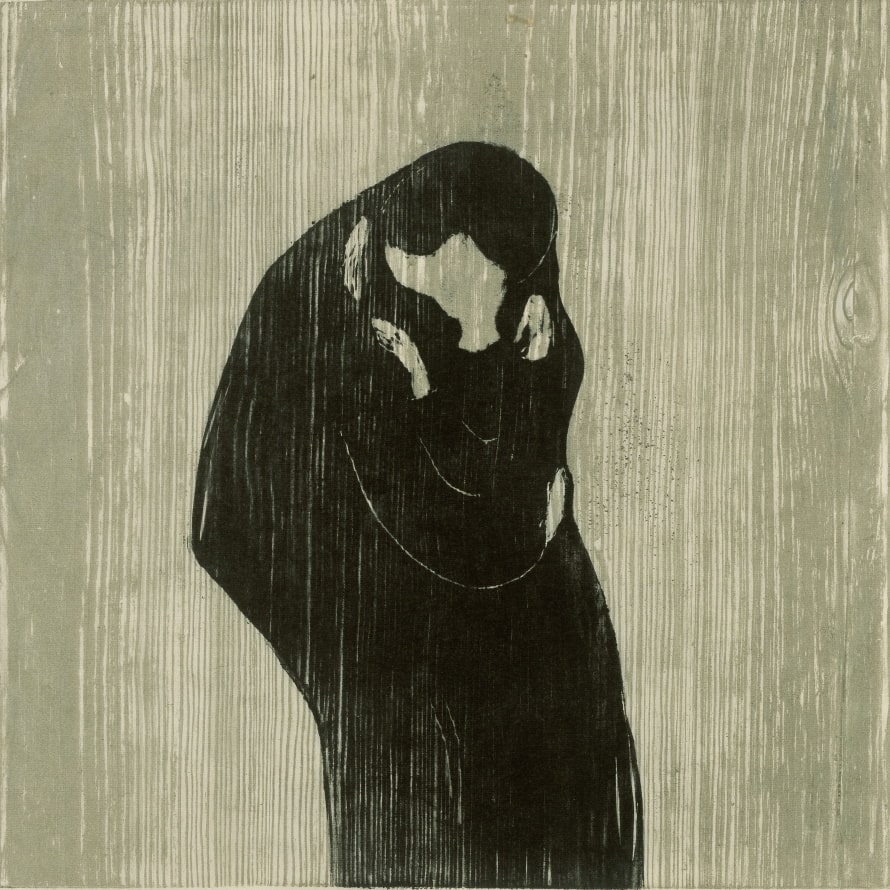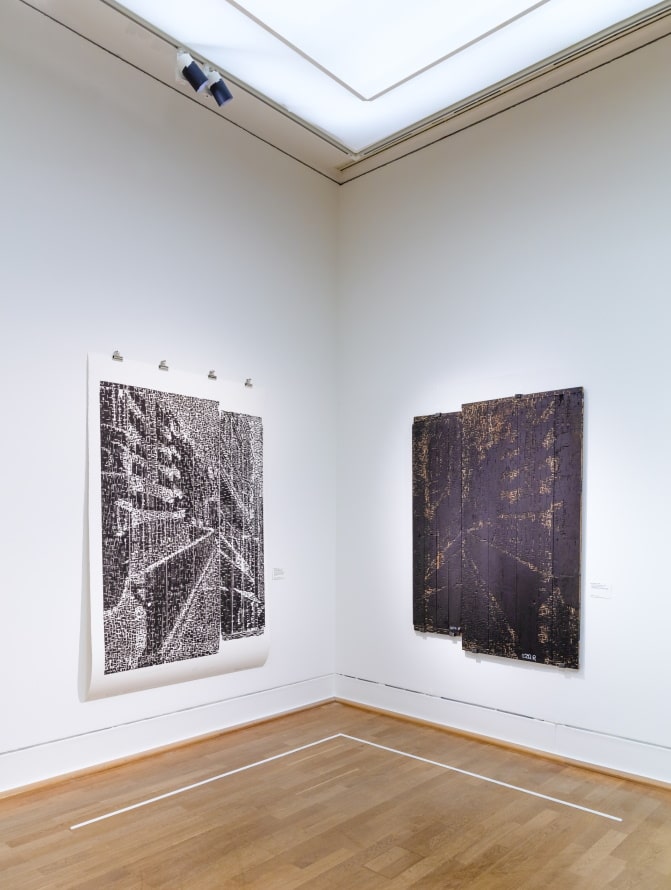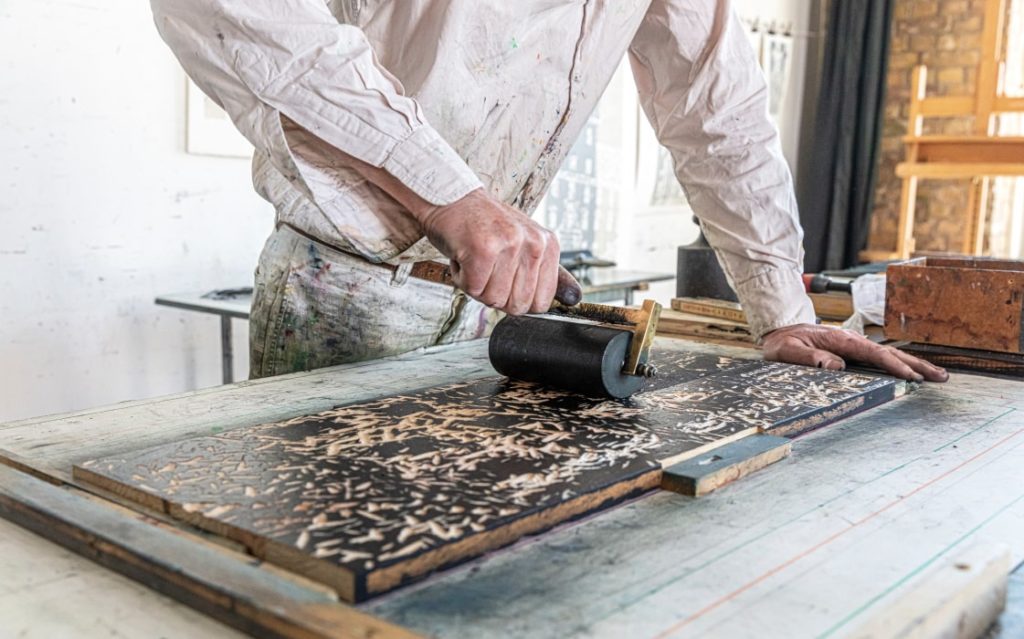“Woodcut. 1400 to the Present” marks the start of a new series of exhibitions at the Berlin Kupferstichkabinett, each presenting an artistic printing technique. Using over 100 works of art on paper – including masterpieces by Albrecht Dürer, Edvard Munch or Käthe Kollwitz – the development of the technique is traced from its beginnings to the present day. The exhibition also focuses on materials and special characteristics. Visitors are invited to immerse themselves in the fascinatingly diverse world of printmaking.
Image above: Albrecht Dürer & Willem Janssen, Rhinoceros, c. 1620, © Staatliche Museen zu Berlin, Kupferstichkabinett / Dietmar Katz
In the beginning there is the woodcut. It is the oldest printmaking technique and is still used today by artists worldwide. The special exhibition shows a varied selection of over 100 works from the rich holdings of the Kupferstichkabinett. It spans the spectrum from the early woodcuts of the 15th century, often only preserved in a few copies, to large-format contemporary works. Along this chronological axis, the view is directed towards various themes, such as the interplay of material and technique or the use of woodcuts. This ranges from Christian devotion with images of saints to card games, decorations in late Gothic wooden boxes and impressive room decorations to book illustration, pamphlets or painting production. In addition to their very practical use, woodcuts also emerged as independent works of art for collectors.

Special attention is given to the development of the colour woodblock print, because in all epochs artists were looking for ways to produce colourful prints. This sometimes led to completely unexpected results. Hand-painted prints from 1460 are on display, as are the first colour prints by Hans Burgkmair and Lucas Cranach the Elder, who competed to invent this technique. In contrast, there are also multicoloured chiaroscuro woodcuts of the 16th century from Italy and the Netherlands, extravagant colour prints of the Rococo period and 20th-century sheets produced with over 20 colour plates, which, inspired by Japanese woodcut masters, are more reminiscent of watercolours than woodcuts.
Around 1900, Expressionists such as Ernst Ludwig Kirchner, Emil Nolde and Karl Schmidt-Rottluff, following in the footsteps of Paul Gauguin, rediscovered the woodcut for themselves. They saw the technique as an expression of a new originality and created masterpieces in a reduced formal language. It is surprising to see the variety of ways in which artists continued to work with the technique in the second half of the 20th century: The exhibition shows abstract compositions by Helen Frankenthaler, Hans Hartung or Esther Fleckner as well as figurative to photo-realistic works by Anselm Kiefer, Georg Baselitz or Franz Gertsch. Contemporary positions in particular, which oscillate between the claim of a unique one-off and the reproductive, mass-media character of the medium, enrich the presentation. In this way, the surprising abundance and enduring topicality of this printing technique is brought to light. A special highlight are the printing blocks from various epochs from the cabinet’s collection, which are shown in large numbers for the first time and make the material tangible to the senses.

Artists in the exhibition:
Gerhard Altenbourg, Jost Amman, Hans Baldung, Jacopo de’ Barbari, Georg Baselitz, Hans Sebald Beham, Peter Behrens, Thomas Bewick, Joseph Beuys, Jean Bézart, Willem Jansz. Blaeu, Niccolò Boldrini, Giovanni Britto, Hans Burgkmair d. Ä., André Butzer, Ugo da Carpi, Francesco Clemente, Lucas Cranach d. Ä., Albrecht Dürer, Lyonel Feininger, Ester Fleckner, Frank Morley Fletcher, Helen Frankenthaler, Caspar David Friedrich, Franz Gertsch, Hendrick Goltzius, Hans Hartung, Sella Hasse, Erich Heckel, Jacoba Heemskerck van Beest, Ludwig von Hofmann, John Baptist Jackson, Christoffel Jegher, Wassily Kandinsky, Anselm Kiefer, Ernst Ludwig Kirchner, Käthe Kollwitz, Utagawa Kuniyoshi, Matthias Mansen, Gerhard Marcks, Wolfgang Mattheuer, Meister Casper, Adolph Menzel, Johannes Molzahn, Carl Moser, Otto Mueller, Edvard Munch, Emil Nolde, Emil Orlik, A. R. Penck, Lucien Pissarro, Alfred Rethel, Ludwig Richter, Peter Paul Rubens, Hans Schaur, Karl Schmidt-Rottluff, Julius Schnorr von Carolsfeld, Hans Springinklee, Max Thalmann, Carl Theodor Thiemann, Tizian, Nasan Tur, Angelo Valla, Félix Vallotton, Michael Wolgemut and Antonio Maria Zanetti.

In an accompanying special presentation “Woodcut-like? 23 Woodcuts from Four Centuries” in the Gemäldegalerie, students from the Department of Art History at the Technical University of Berlin will be taking a closer look at the subject.
Woodcut. 1400 to today” is curated by Georg Josef Dietz, Head of the Conservation/Restoration Department and Christien Melzer, Curator of Dutch and English Art before 1800 of the Kupferstichkabinett.
An extensive supporting programme – including an artist talk and a print event with Nasan Tur on September 11th 2022 – accompanies the exhibition.
A German-language catalogue will be published by Hatje Cantz Verlag: 208 pages, 162 illustrations, ISBN 978-3-7757-5329-6
WHEN?
Exhibition dates: Friday, 3 June – Sunday, 11 September 2022
Opening hours: Tue – Fri 10 am – 6 pm, Sat + Sun 11 am – 6 pm
WHERE?
Kulturforum, Kupferstichkabinett
Matthäikirchplatz
10785 Berlin-Tiergarten






